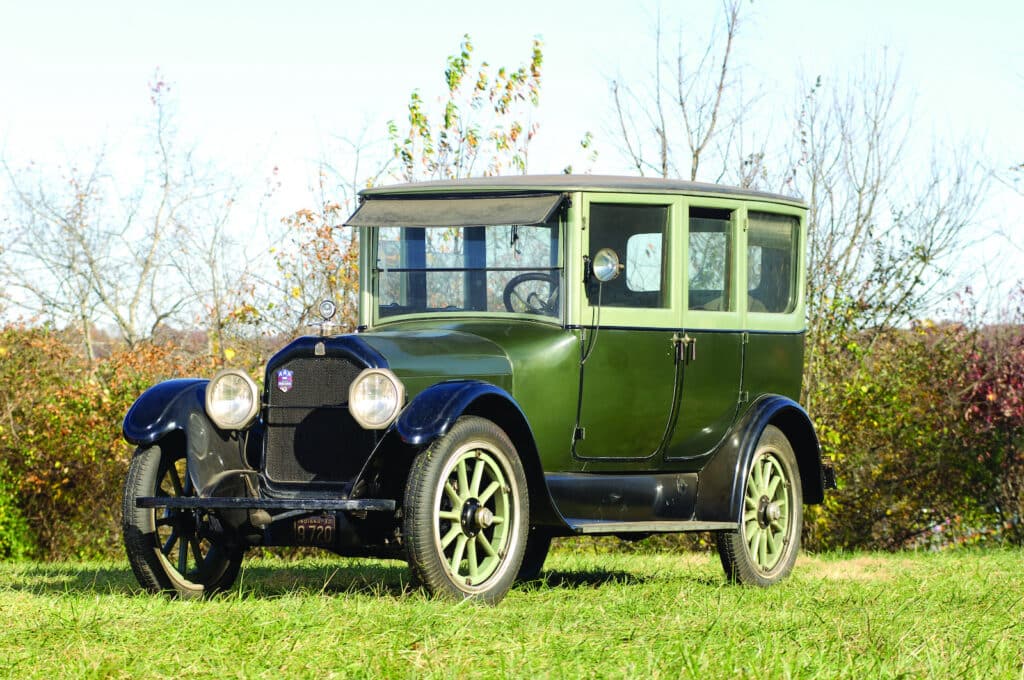
It was once among America’s most respected cars: Peerless.
Based in Cleveland, Ohio, the car was referred to as one of the three Ps: Peerless, Packard, and Pierce-Arrow — all considered America’s finest automakers at the time. And while the Great Depression killed Peerless’ automobile manufacturing, like so many other automakers, the vestiges of the company survive, even if you drink it rather than drive it.
A mundane beginning
Peerless’ history has an inauspicious beginning, established this week four years after the Civil War as the Peerless Wringer & Manufacturing Co., a manufacturer of clothes wringers. But as bicycles become popular, Peerless expands into bicycle manufacturing before entering carmaking in 1900, producing a single-cylinder tricycle called the Motorette powered by French DeDion engines.
But Peerless needs expertise if it is to grow, and for that it turns to Louis Mooers in 1902. Mooers built his first car in 1897, but was never able to secure funding to put it into production. He arrives at Peerless in 1902, just as the company changes its name to the Peerless Motor Car Co.. As chief engineer, he quickly develops the company’s product line, with a breakthrough arriving with the 1904 model year: the brand’s first 4-cylinder engine.
Peerless earns its reputation

In an era when cars literally resembled horseless carriages, with vehicle occupants sitting atop the engine, the 1904 Peerless is relentlessly modern. Its motor is up front, ahead of the driver, and connected to live rear axle via a driveshaft. It is built using a steel frame, rather than wood, a custom carried over from the 19th century carriage trade. And it has a steering wheel not a tiller, one that is tilted forward to ease entry and exit.
Mooers also believes that racing improves the breed, and hires the top race car driver of the era to pilot the powerful 60-horsepower race car he has developed. The car is the Green Dragon; the driver is Barney Oldfield, the man who had recently piloted Henry Ford’s 999 racecar. Soon, speed records are falling as the Peerless proved, well, peerless. This led to its great advertising slogan, “All that the name implies.”
But Mooers leaves the following year, heading to Moon Motor Car Co. in St. Louis, named for the family who established it. His departure would begin a series of management changes, something the company would endure throughout its existence as an automaker.
In the meantime, the cylinder count grew, with Peerless following Cadillac by introducing V-8-powered models in 1913.
Management turmoil — the new normal

But the company’s biggest change occurs in 1921, when Richard Collins, former president and general manager of Cadillac, bought the company and brought along a number of Cadillac engineers. The regime lasts two years before they left to create a new car for General Motors: the Pontiac.
Collins is replaced by another GM man: Edward Ver Linden, who steers Peerless into the mid-price market by offering a new 6-cylinder model. Sales more than double. While V-8 Peerless models commanded $4,000 or more, the new Six costs $1,500, a very low price for a high-end nameplate.
But Peerless’ management turmoil continues, with Ver Linden leaving for Jordan Motor Car Co. in 1928. He is replaced by Peerless’ vice-president Leon German, who in turn is replaced the following year by Marmon Motor Car’s vice-president James Bohannon. It is this regime that retires the Peerless V8, replacing it with a Continental V8, which did little to enhance its power or prestige.

Then there is the issue of the Great Depression, which stresses many car companies, luxury automakers most of all. With so many people out of work, being seen in a high-end car was not a high priority.
As sales dwindle to annual rate of 3,642 units in 1930 from 10,437 vehicles four years earlier, the company is on the ropes. The last Peerless rolls off the assembly line even as the most peerless of Peerless models was about to be produced. With a 7.6-liter V-16 producing 178 hp and a body by Murphy, it is constructed mostly of aluminum, a collaboration between Peerless and Alcoa, also based in Cleveland.
The company builds one before the assembly line ground to a halt.
A new beginning
But Peerless’ president James Bohannon has another idea.

The company is not economically viable as a luxury automaker, so why not convert the 8-acre facility into a brewery? Bohannon acquires the rights to the Carling beer recipes, their distinctive labels, and their trade names from the Brewing Corp. of Canada in exchange for 25,000 shares of Peerless stock.
The plant reopens in 1934 as the Brewery Corp. of America, brewing Carling Red Cap Ale. But the company’s sales are meager until the introduction of Carling Black Label, a high-quality lager. In 1944, Canadian Breweries Ltd., gains a controlling interest, changing the company’s name to Carling Brewing Co. 10 years later. By 1960, Carling is the fourth largest brewery in America, with sales of 4.8 barrels of beer annually.
But the 1970s prove disastrous for Carling, as it closes its Cleveland plant in 1971, although it reopens the following year as a contract brewer for C. Schmidt & Sons of Philadelphia, a service it provides through 1984.
Nevertheless, cost cutting schemes and heavy advertising by Anheuser-Busch and Miller Brewing during the Me Decade causes Carling to cut prices to compete. Along with it goes profitability.
So, in 1976, Carling of Canada sells the American division, after which it survives any number of mergers and acquisitions over the decades. Today, Carling Black Label is owned by the Molson Coors Brewing Company, and is the final vestige of Peerless, a word that doesn’t apply to the quality of its beer.
- SEO Powered Content & PR Distribution. Get Amplified Today.
- Platoblockchain. Web3 Metaverse Intelligence. Knowledge Amplified. Access Here.
- Source: https://www.thedetroitbureau.com/2023/01/the-rearview-mirror-all-that-the-name-implies/



